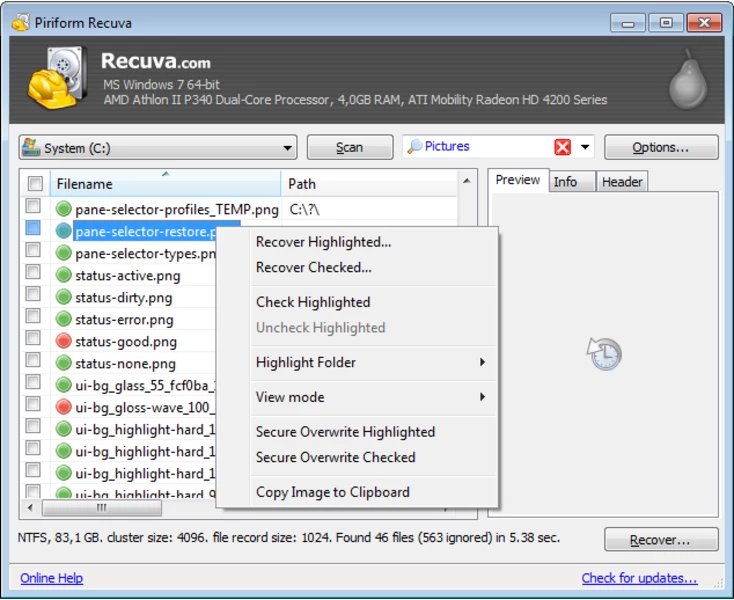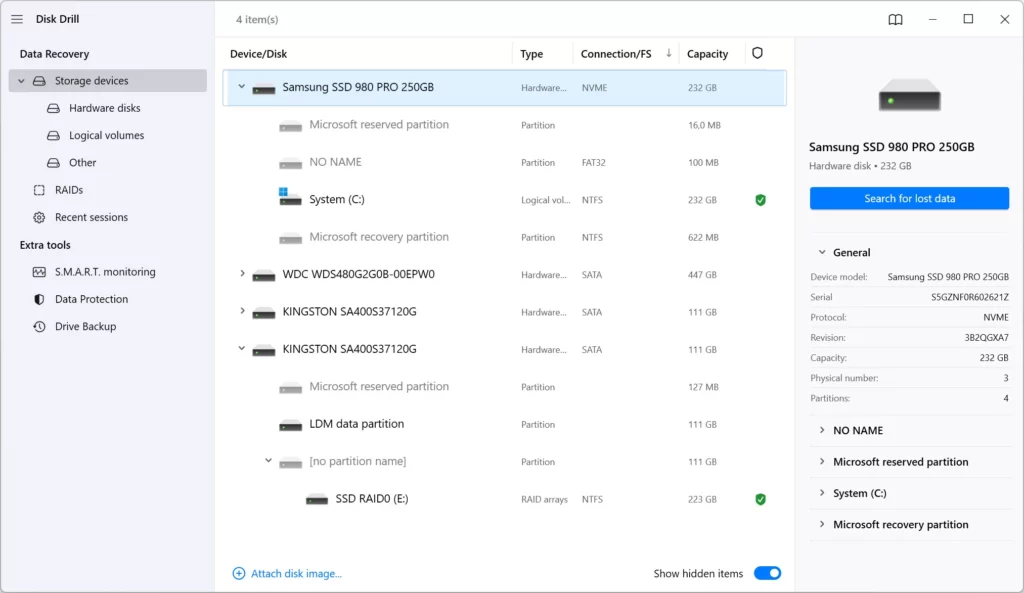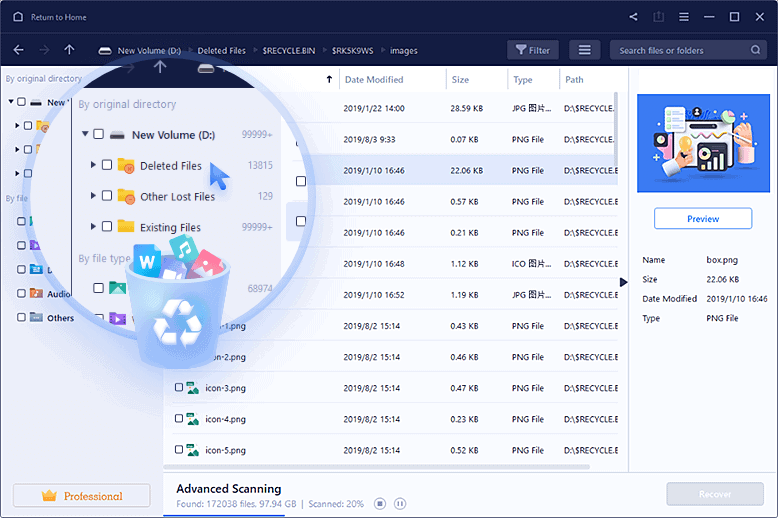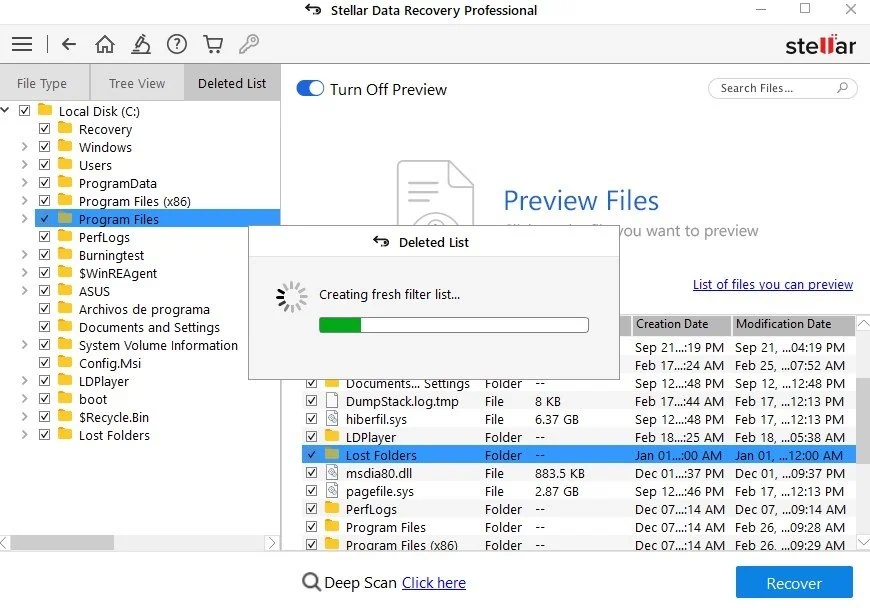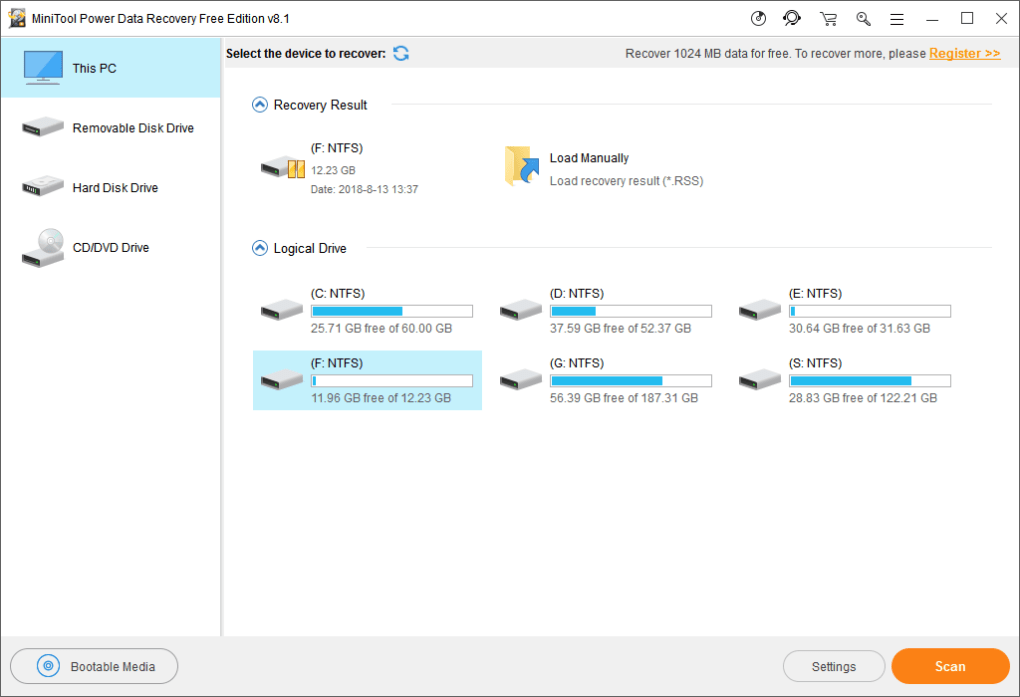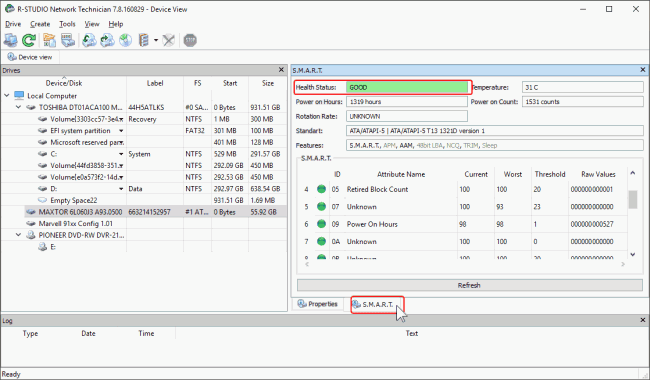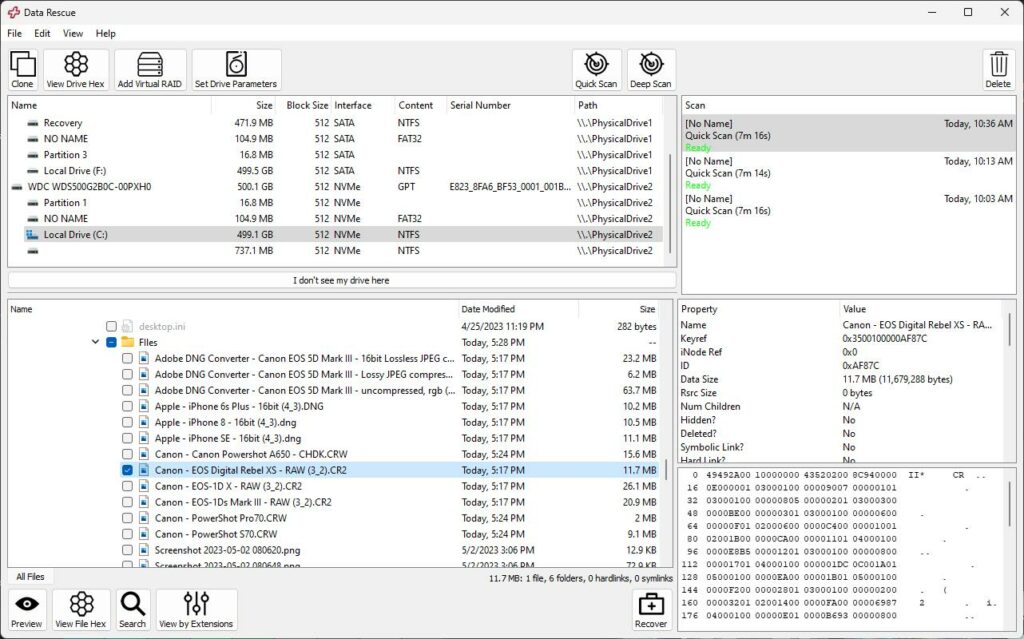You don’t want to be caught off guard when you lose an important file. The sudden realization that a crucial document or cherished photo is missing can be stressful and frustrating. Instead, you want to have reliable data recovery software already installed on your system, ready to spring into action when needed. With numerous options in the market, it can be overwhelming to decide which one is best suited for your needs. This article is here to help you navigate through the choices and pick the best solution for you, ensuring your important files are always recoverable.
What is data recovery software?
Data recovery software is a specialized tool designed to retrieve lost, deleted, or corrupted files from various storage devices such as hard drives, SSDs, USB flash drives, and memory cards. These programs work by scanning the storage media for remnants of files that have been removed or damaged, and then reconstructing them into a usable format. Whether you’ve accidentally deleted a file, experienced a system crash, or are dealing with a corrupted partition, effective data recovery software can often restore your data and save you from potential loss. In the following sections, we will explore the top 18 data recovery software options available in 2024, detailing their features, pros, cons, and overall performance to guide you in making an informed decision.
Top 18 Best Data Recovery Software
In this article, you will discover a comprehensive list of the best data recovery software available. These tools are designed to help you recover lost or deleted files, ensuring your valuable data can be retrieved efficiently. Read on to find out more about their features and benefits.
1. Recuva (Windows)
Recuva is a trusted data recovery tool specifically for Windows users, developed by the creators of CCleaner. It is known for its ease of use and effective recovery capabilities, making it a popular choice for recovering accidentally deleted files.
Pros:
- Free version available
- Simple and intuitive interface
- Quick and deep scan options
- Secure overwrite feature for permanent deletion
- Portable version available
Cons:
- Limited support for non-standard file systems
- Less effective on severely corrupted files
- No macOS version
2. Disk Drill Data Recovery (Windows & Mac)
Disk Drill is one the best data recovery software for Windows and Mac because of its ability to effortlessly recover lost or deleted data from all internal and external storage devices, regardless of their file system.
Pros:
- Supports hundreds of file formats
- Powerful recovery capabilities
- Lost partition search
- Data protection and backup features
- Intuitive user interface
- Recovers up to 500 MB of data for free (Windows)
- Ability to mount scan results as a folder
Cons:
- No phone support
- No option to create boot disks
- No network recovery
Wondershare Recoverit is a versatile data recovery tool that offers strong support for both Windows and Mac systems. It is designed to help users recover lost files from computers, external drives, cameras, and other storage devices with ease.
Pros:
- High recovery rate
- Supports over 1,000 file formats
- Simple and clean user interface
- Real-time recovery preview
- 24/7 customer support
Cons:
- Can be slower compared to other tools
- Limited recovery in the free version
- Requires a paid license for deep scans
4. EaseUS Data Recovery Wizard (Windows & Mac)
EaseUS Data Recovery Wizard is a user-friendly tool that simplifies the process of recovering lost data. It supports a broad array of file types and storage devices, making it a reliable choice for both beginners and advanced users.
Pros:
- User-friendly interface
- Supports various file formats and storage devices
- Preview before recovery
- Clear instructions and guides
Cons:
- Limited free version recovery
- Deep scans can take a while
- Some features require a higher-tier license
5. Stellar Data Recovery (Windows & Mac)
Stellar Data Recovery is a comprehensive solution for retrieving lost or deleted data from various storage devices, including hard drives, SSDs, and USB flash drives. Its user-friendly design and powerful features cater to both personal and professional data recovery needs.
Pros:
- Recovers data from multiple storage devices
- Supports different file formats
- Deep scan and quick scan modes
- File preview before recovery
- User-friendly interface
- Advanced RAID recovery capabilities
Cons:
- Higher price compared to some competitors
- Slower deep scan process
- Limited features in the free version
6. MiniTool Power Data Recovery (Windows & Mac)
MiniTool Power Data Recovery is an accessible and robust data recovery software that provides comprehensive features for retrieving lost or deleted data from hard drives, SSDs, and removable media. It is suitable for both individual users and enterprises.
Pros:
- Supports a wide range of file types and devices
- Simple to use, even for beginners
- Free version available with limited recovery
- Preview before recovery
- Deep scan and quick scan modes
Cons:
- Limited features in the free version
- Recovery speed could be improved
- Higher-tier licenses required for some advanced features
7. R-Studio Data Recovery Software (Windows, Mac, & Linux)
R-Studio is a powerful and feature-rich data recovery software designed for technically proficient users. It supports a vast range of file systems and provides advanced tools for complex data recovery tasks.
Pros:
- Supports multiple file systems and platforms
- Advanced recovery options for experienced users
- Network recovery capabilities
- Disk imaging and cloning
- Hex editor for low-level data analysis
Cons:
- Steeper learning curve
- More expensive than many consumer-focused alternatives
- Complex user interface suitable for advanced users
8. Data Rescue (Windows & Mac)
Data Rescue by Prosoft Engineering is a robust data recovery solution that offers a suite of features tailored to both personal and professional users. It excels at recovering files from failing or corrupt storage devices.
Pros:
- High recovery success rate
- User-friendly interface
- Comprehensive scan and recovery options
- RAID recovery support
- File preview before recovery
Cons:
- Higher cost compared to similar tools
- Slower scanning process
- Limited features in the free version
- Glarysoft File Recovery Free
9. Glarysoft File Recovery Free (Windows)
Glarysoft File Recovery Free is a reliable data recovery software specifically for Windows users, primarily known for its ease of use and effective performance. It’s an excellent choice for users who need to recover deleted files quickly and efficiently.
Pros:
- Completely free to use
- User-friendly interface
- Supports various file types
- Quick scanning capabilities
- Option to filter files for recovery
Cons:
- Limited advanced features
- No macOS support
- Not as effective on severely damaged drives
10. Puran Data Recovery (Windows)
Puran Data Recovery is another Windows-exclusive software that offers robust recovery solutions for lost or deleted files. This freeware is particularly effective for straightforward data recovery tasks.
Pros:
- Free for personal use
- Simple and clean interface
- High recovery rate for basic tasks
- Supports lost partition recovery
- Lightweight and fast
Cons:
- Limited advanced data recovery options
- No cross-platform support
- Basic functionalities compared to paid alternatives
11. TestDisk (Windows, Mac, & Linux)
TestDisk is an open-source data recovery software that stands out for its powerful capabilities, suitable for both novice and advanced users. It’s particularly effective in recovering lost partitions and making non-booting disks bootable again.
Pros:
- Free and open-source
- Supports multiple operating systems
- High success rate in recovering lost partitions
- Comprehensive disk analysis tools
- Active community support
Cons:
- Command-line interface can be intimidating for some users
- Steeper learning curve compared to GUI-based tools
- Lack of advanced features for specific file recovery
12. PhotoRec (Windows, Mac, & Linux)
PhotoRec, often bundled with TestDisk, is a complementary open-source software that specializes in recovering lost files from digital media, including hard disks, CD-ROMs, and memory cards.
Pros:
- Free and open-source
- Compatible with a wide range of devices and file systems
- Effective at recovering photos and various other file types
- No need to install (portable version available)
- Active community and regular updates
Cons:
- No graphical user interface (command-line based)
- May require advanced knowledge for optimal use
- Slower recovery process for larger drives
13. Wise Data Recovery (Windows)
Wise Data Recovery is a fast and lightweight data recovery tool for Windows users. It helps recover lost data from hard drives, USB flash drives, and other removable storage devices with ease.
Pros:
- Free version available
- Simple and intuitive interface
- Quick scan mode for immediate results
- Portable version available
- Lightweight software
Cons:
- Limited advanced recovery options
- No macOS support
- May not recover data from seriously damaged storage
14. Undelete 360 (Windows)
Undelete 360 offers efficient data recovery solutions specifically tailored for files that have been accidentally deleted from a user’s computer, including those emptied from the Recycle Bin, on Windows systems.
Pros:
- Free version available
- Easy-to-use interface
- Supports various file formats
- Secure recovery options
- Offers both quick and deep scan modes
Cons:
- Ageing interface design
- Limited features in the free version
- No support for macOS and Linux
15. GetDataBack (Windows)
GetDataBack is a renowned data recovery software that provides comprehensive recovery solutions for various types of data loss situations. It’s known for its speed and efficiency in restoring lost data.
Pros:
- Simple and straightforward user interface
- Fast recovery process
- Supports multiple file systems (FAT, NTFS, etc.)
- Preview files before recovery
- Regular software updates
Cons:
- No free version available
- Limited to Windows users
- Higher cost compared to some alternatives
16. Ontrack EasyRecovery (Windows & Mac)
Ontrack EasyRecovery is a comprehensive data recovery tool designed to retrieve lost or damaged files from various storage media, including hard drives, SSDs, memory cards, and USB drives. It caters to both novice and advanced users with its intuitive interface and powerful recovery capabilities.
Pros:
- User-friendly interface suitable for all skill levels
- Supports a wide range of file types and storage devices
- Features both quick and deep scan modes
- Option to create disk images for recovery
- Recovers data from formatted drives and corrupted partitions
Cons:
- Higher price point compared to similar tools
- Limited features in the free version
- Slower scanning times for larger drives
17. FonePaw Data Recovery
FonePaw Data Recovery is an intuitive software solution designed to help users recover lost or deleted data from various types of storage devices. Compatible with both Windows and Mac, it is known for its simplicity and effectiveness in managing data recovery tasks.
Pros:
- Easy-to-navigate interface
- Supports a wide range of file types and devices
- Quick and deep scan options
- Preview files before recovery
- Reliable recovery performance
Cons:
- Limited free version features
- Some recovery tasks require a higher-tier license
- Scanning process might be slower on larger drives
18. iBeesoft Data Recovery (Windows & Mac)
iBeesoft Data Recovery is a versatile tool designed to help users recover lost or deleted files from a variety of storage devices, such as hard drives, USB drives, and SD cards. Its intuitive interface and powerful recovery capabilities make it an attractive option for both novice and experienced users.
Pros:
- Supports over 1,000 file types
- User-friendly interface
- Quick scan and deep scan modes
- File preview before recovery
- Can recover data from formatted or corrupted drives
Cons:
- Limited features in the free version
- Deep scans can be time-consuming
- No advanced options for technical users
Frequently Asked Questions
Can I recover files from a failed hard drive?
Recovering files from a failed hard drive depends on the extent and nature of the failure. If the drive is physically intact but experiencing logical errors, software-based recovery tools may be able to retrieve the lost data. However, if the drive has suffered physical damage or mechanical failure, professional data recovery services may be required. It’s crucial to avoid using the drive further to prevent additional damage and increase the chances of successful recovery.
What to do if data recovery software can’t find my files?
If data recovery software can’t locate your files, consider the following steps:
- Use a different software tool—another program might have better results.
- Ensure the drive is not causing further damage by powering it down.
- Consult professional data recovery services for advanced recovery techniques.
Is data recovery software safe to use?
Most reputable data recovery software is safe to use and does not harm your data. However, it’s important to download software from trusted sources to avoid malware or other security risks. Always follow the software’s instructions carefully to ensure the best possible outcome.
How to prevent data loss in the future?
To prevent data loss, consider these best practices:
- Regularly back up important files to multiple locations, including external drives or cloud storage.
- Maintain your storage devices to prevent failure, such as avoiding overheating or physical damage.
- Use reliable antivirus software to protect against malware.
Can I recover files from a formatted drive?
Yes, it is often possible to recover files from a formatted drive. Data recovery software can scan the drive for remaining traces of the lost files and attempt to restore them. However, the success rate decreases if new data has been written to the drive after formatting.
Which data recovery software is best for you?
The best data recovery software for you will depend on your specific needs and the type of data loss you are experiencing. Here are some factors to consider when choosing the right software:
- Operating System Compatibility: Ensure that the software supports your operating system, whether it is Windows, macOS, or Linux.
- Type of Data Loss: Consider the nature of your data loss situation—whether it’s due to accidental deletion, formatting, or corruption.
- File Type Support: Check if the software can recover the specific types of files you need, such as documents, photos, or videos.
- Ease of Use: Look for a user-friendly interface, especially if you are not tech-savvy.
- Advanced Features: Evaluate if you require advanced features like deep scanning, disk cloning, or network recovery capabilities.
- Cost: Determine your budget and whether you need a free version with basic features or are willing to invest in a premium version for more comprehensive recovery options.
How does data recovery software work?
Data recovery software works by scanning storage devices such as hard drives, SSDs, USB drives, and memory cards for missing or deleted files. When files are deleted, the data itself isn’t immediately erased; rather, the file system marks the space as available for new data. Recovery software exploits this by identifying and reconstructing the data from these available spaces before they are overwritten by new files. Here’s a closer look at the key steps involved:
- Scanning: The software performs a scan of the storage device. This can range from a quick scan to detect recently deleted files to a deep scan that delves into the drive’s structure for older or more fragmented data.
- File Identification: The program identifies recoverable files based on known file signatures and patterns. This includes recognizing file headers, footers, and data structures.
- Reconstruction: Once identifiable data is found, the software reconstructs the files to make them accessible again. This might involve piecing together fragmented files from different parts of the storage medium.
- Previewing Files: Many advanced tools offer a preview feature allowing users to view the recoverable files before initiating the full recovery process. This helps in selectively recovering only the desired files.
- Recovery Process: The final step is the extraction and saving of the recovered files to a separate, safe location. This avoids overwriting any existing data on the original storage device and ensures the integrity of the recovered files.
The efficiency and success rate of data recovery software depend on several factors, including the extent of the data loss, the time elapsed since deletion, and whether new data has been written to the storage device since the data loss occurred.
Why do you even need data recovery software?
Data recovery software is essential in our digital lives because it provides a safety net against unexpected data loss. In an age where valuable personal and professional information is predominantly stored digitally, the loss of such data can be catastrophic. This software becomes crucial in instances of accidental deletion, unexpected formatting, system crashes, or corruption due to malware attacks. Without data recovery tools, retrieving lost files could be nearly impossible or exorbitantly costly if requiring professional data recovery services. Moreover, these tools empower users to take proactive measures to safeguard their data, offering not just peace of mind but also a practical solution to recover critical files swiftly and efficiently when the need arises. By using data recovery software, individuals and businesses can mitigate the risk of permanent data loss and minimize downtime associated with such incidents.
What to consider when choosing data recovery software?
When choosing data recovery software, several important factors should be taken into consideration to ensure you select the best tool for your needs. Here are some additional aspects to ponder:
- Success Rate: Research and reviews often provide insight into the success rate of various recovery tools. Opt for software known for high recovery rates to improve your chances of retrieving your lost data.
- Customer Support: Reliable customer support can be invaluable, especially if you encounter issues during the recovery process. Look for software that offers robust support options like live chat, email assistance, or phone support.
- Update Frequency: Regular updates to the software indicate continual improvement and responsiveness to emerging issues and new hardware. Software that frequently updates is more likely to support the latest devices and technologies.
- Trial Version: Many reputable data recovery tools offer a trial version, which allows you to test their capabilities before making a purchase. Take advantage of these trials to ensure the software meets your requirements.
- Reviews and Testimonials: User reviews and expert testimonials can provide real-world insights into the effectiveness and reliability of different data recovery software options. Look for software with consistently positive feedback.
- Security and Privacy: Ensure that the software follows stringent security protocols to protect your data during the recovery process. Some tools also offer additional encryption features to safeguard sensitive information.
By carefully evaluating these factors, you can make a more informed decision and select data recovery software that will provide the best possible outcome for your specific data recovery needs.


